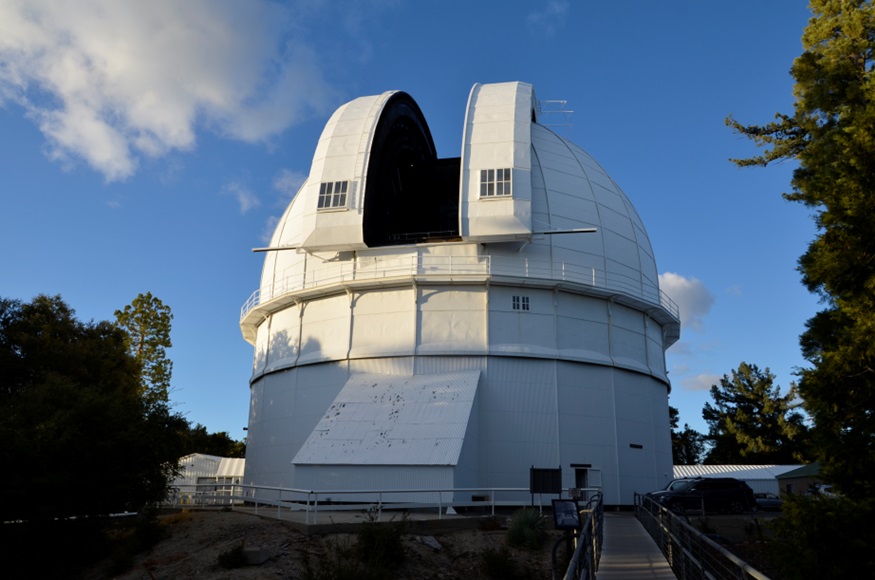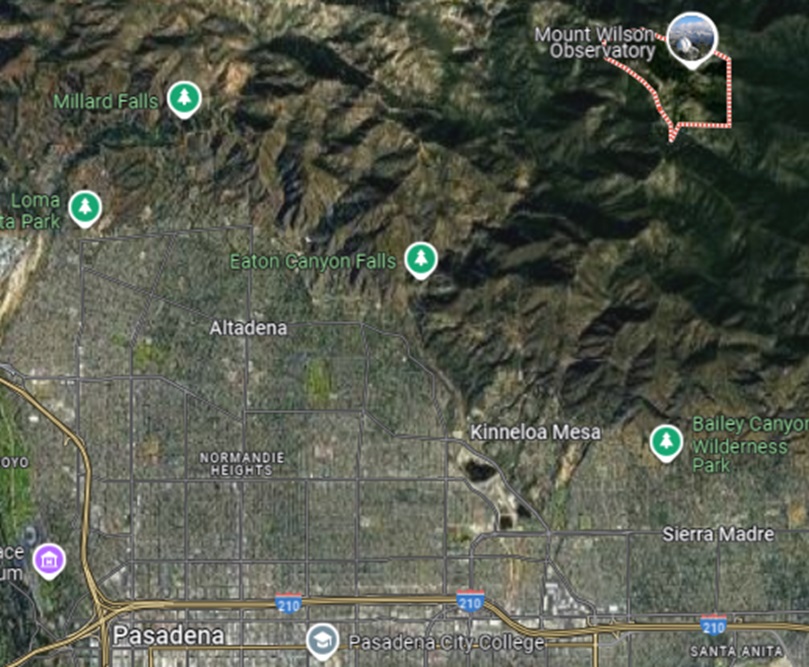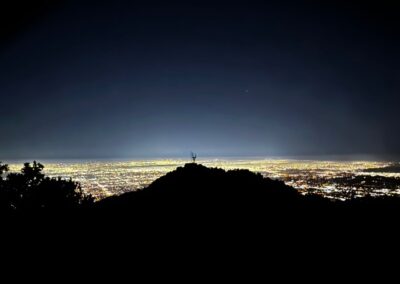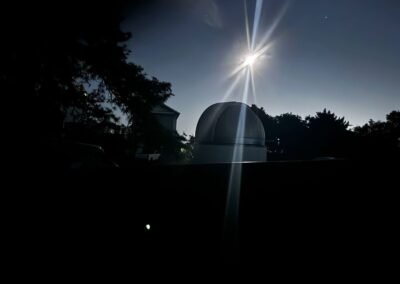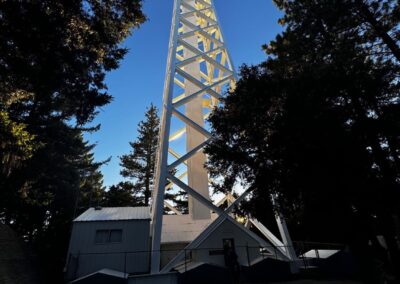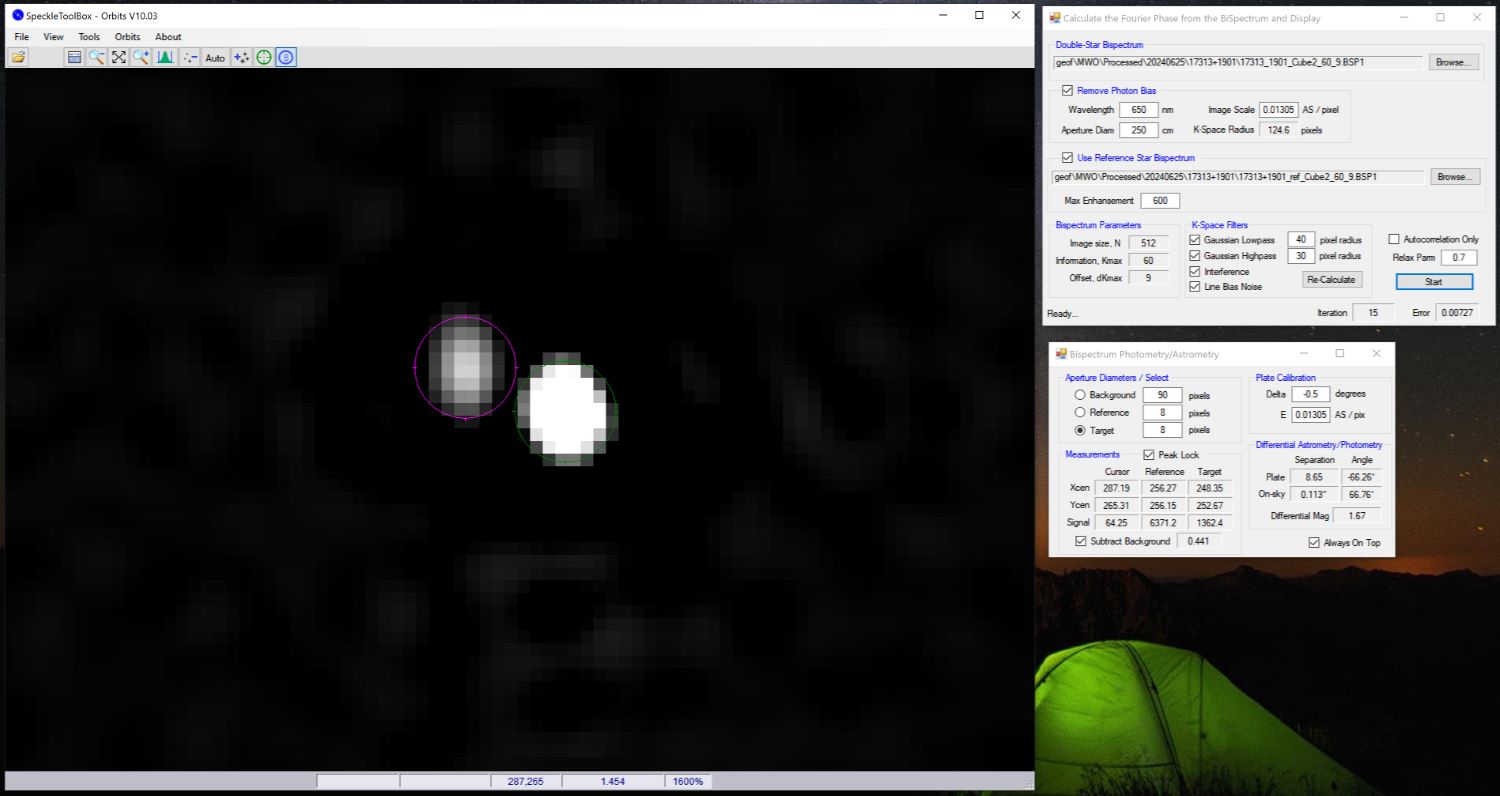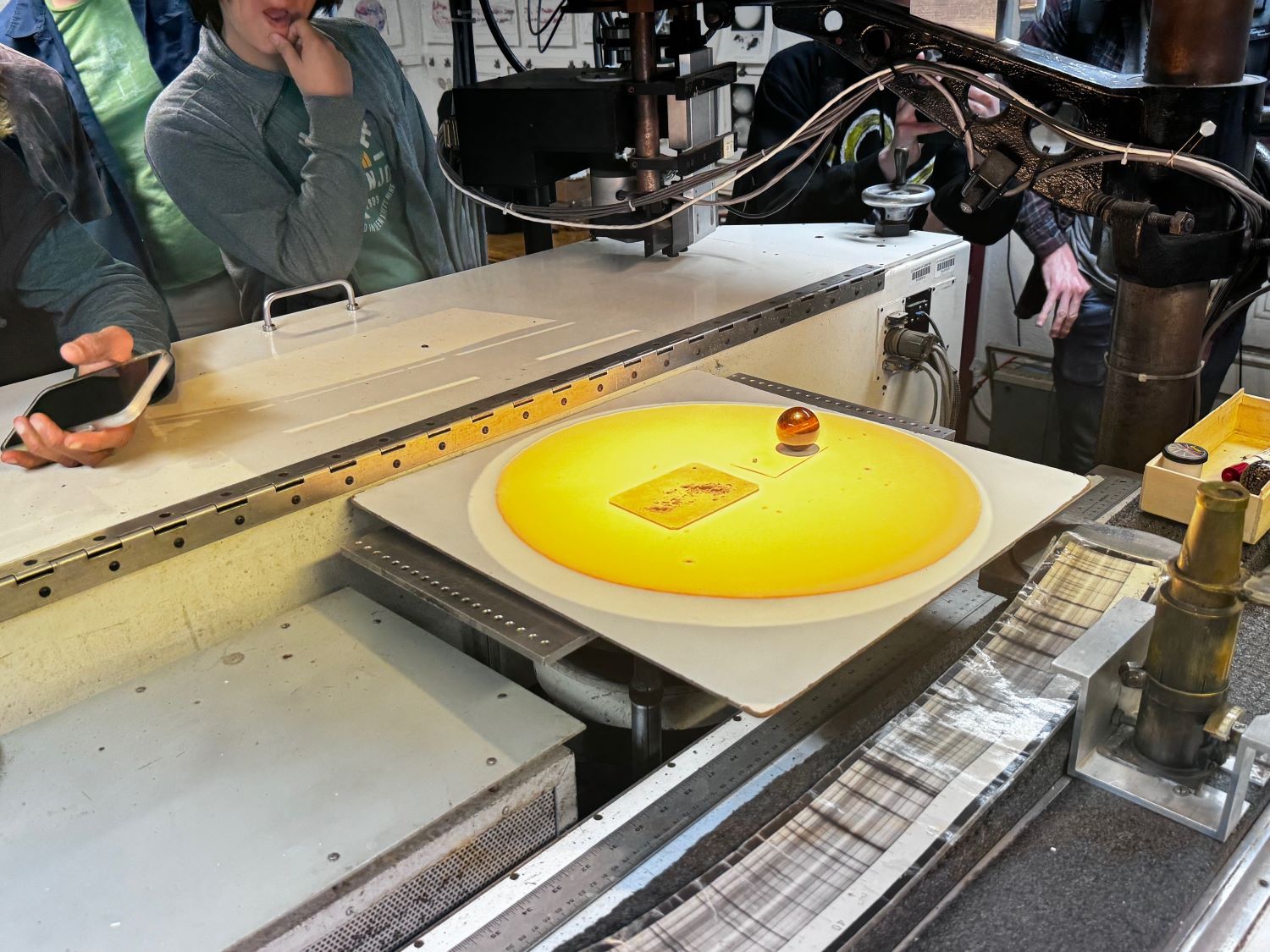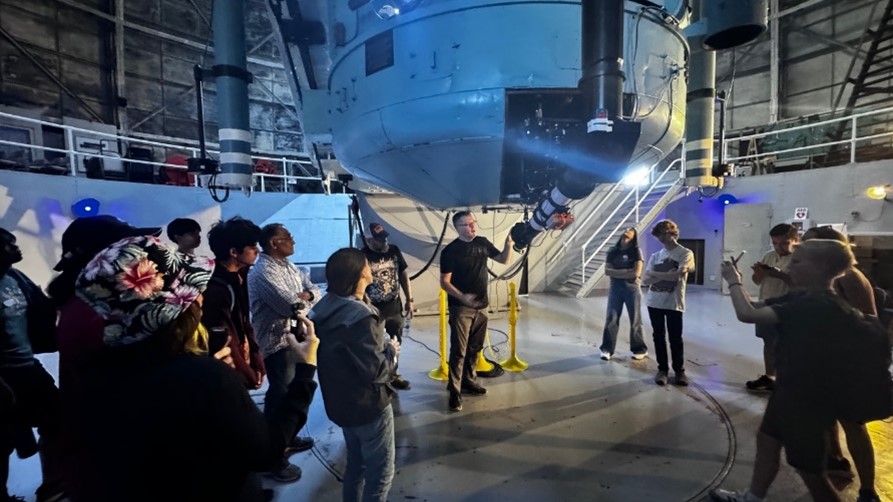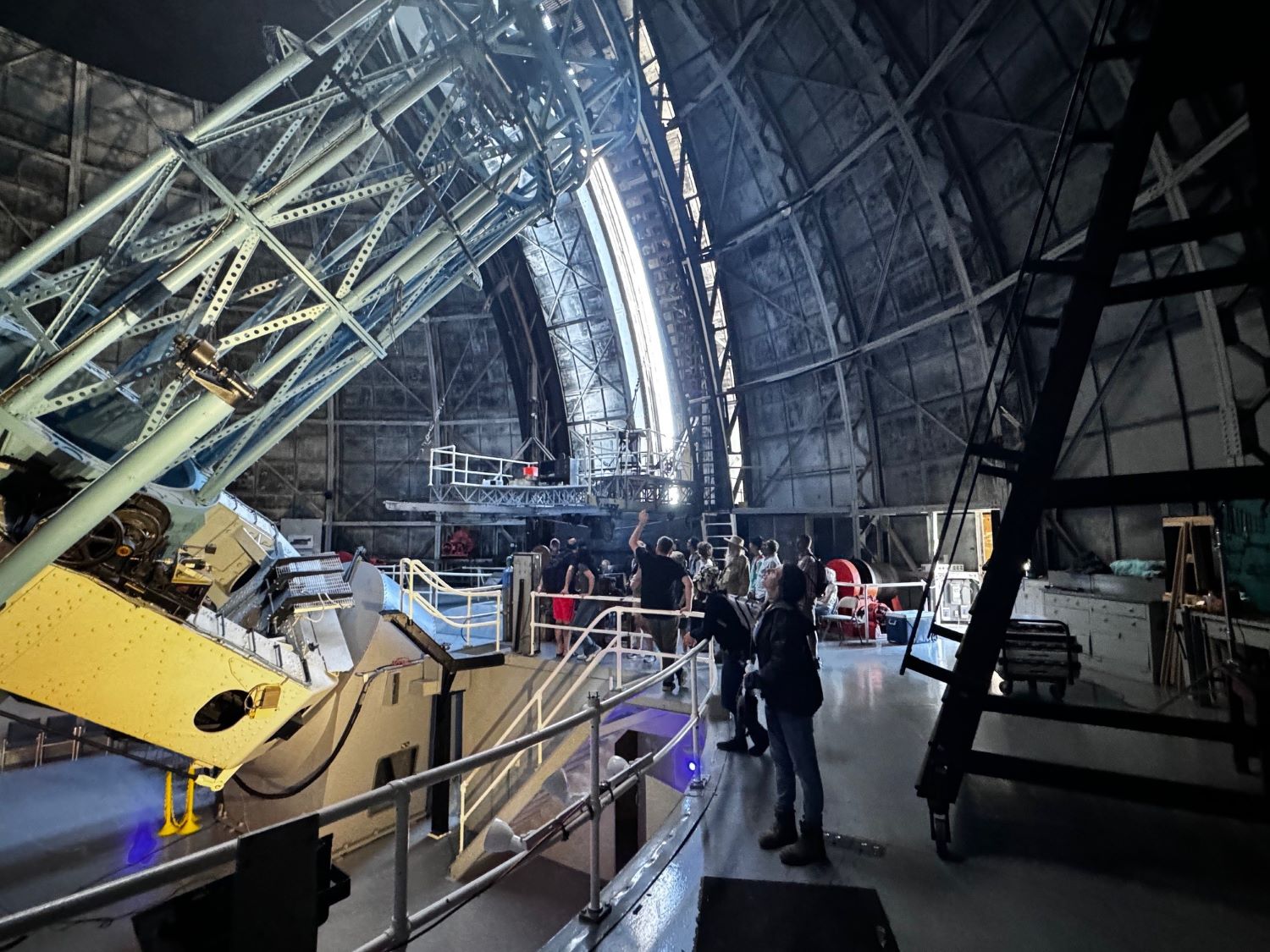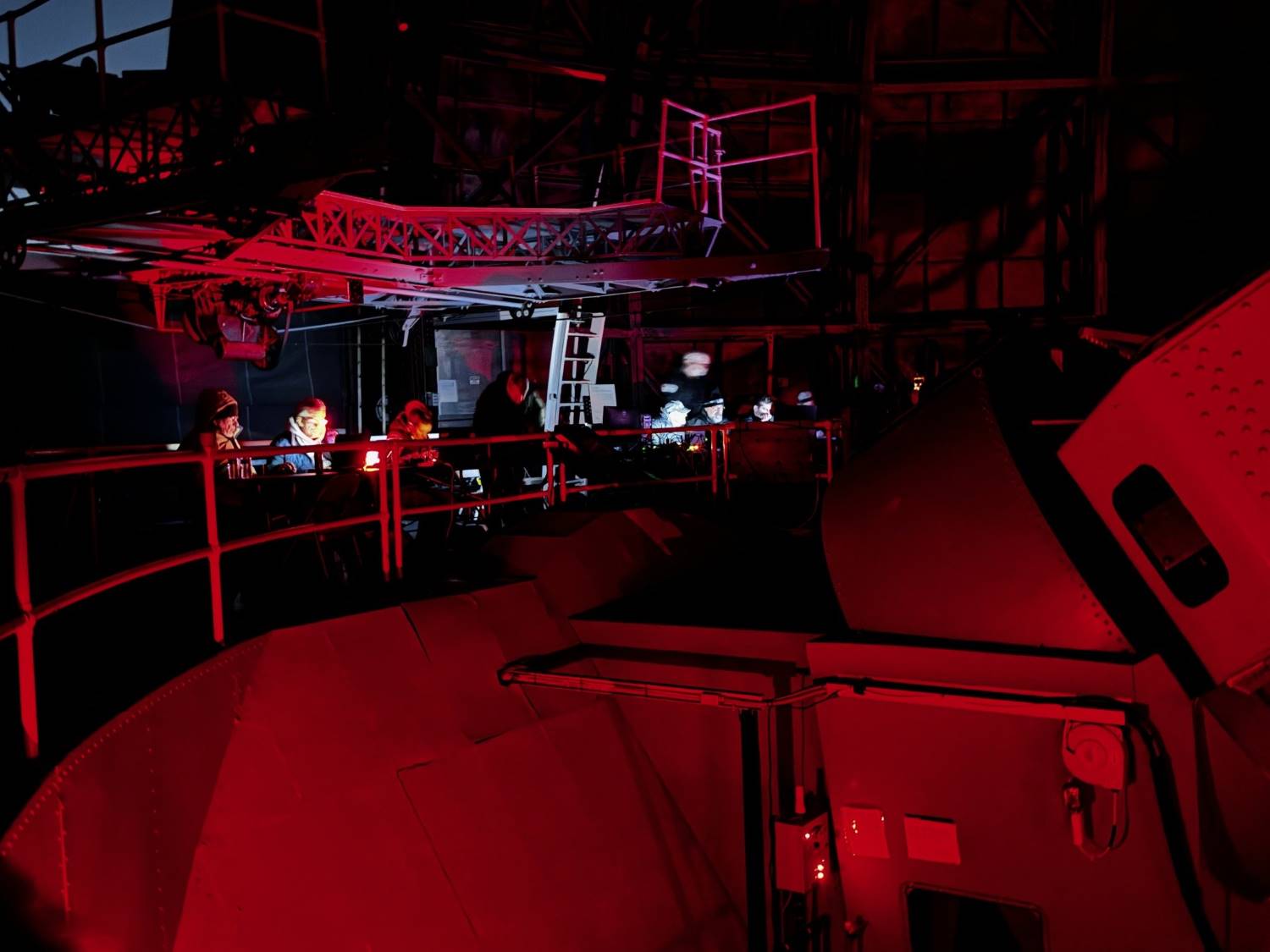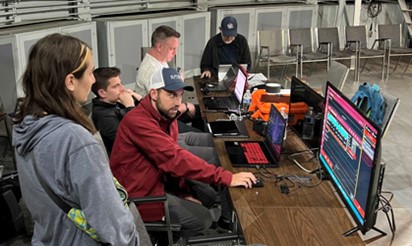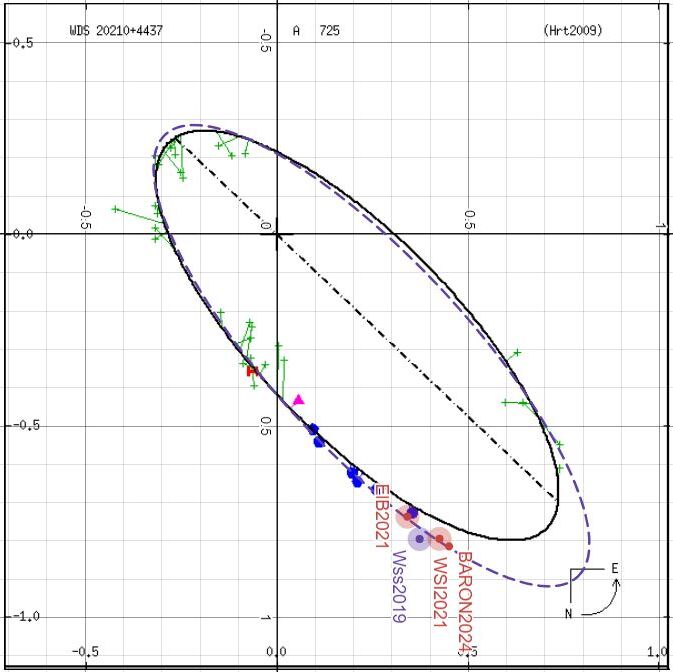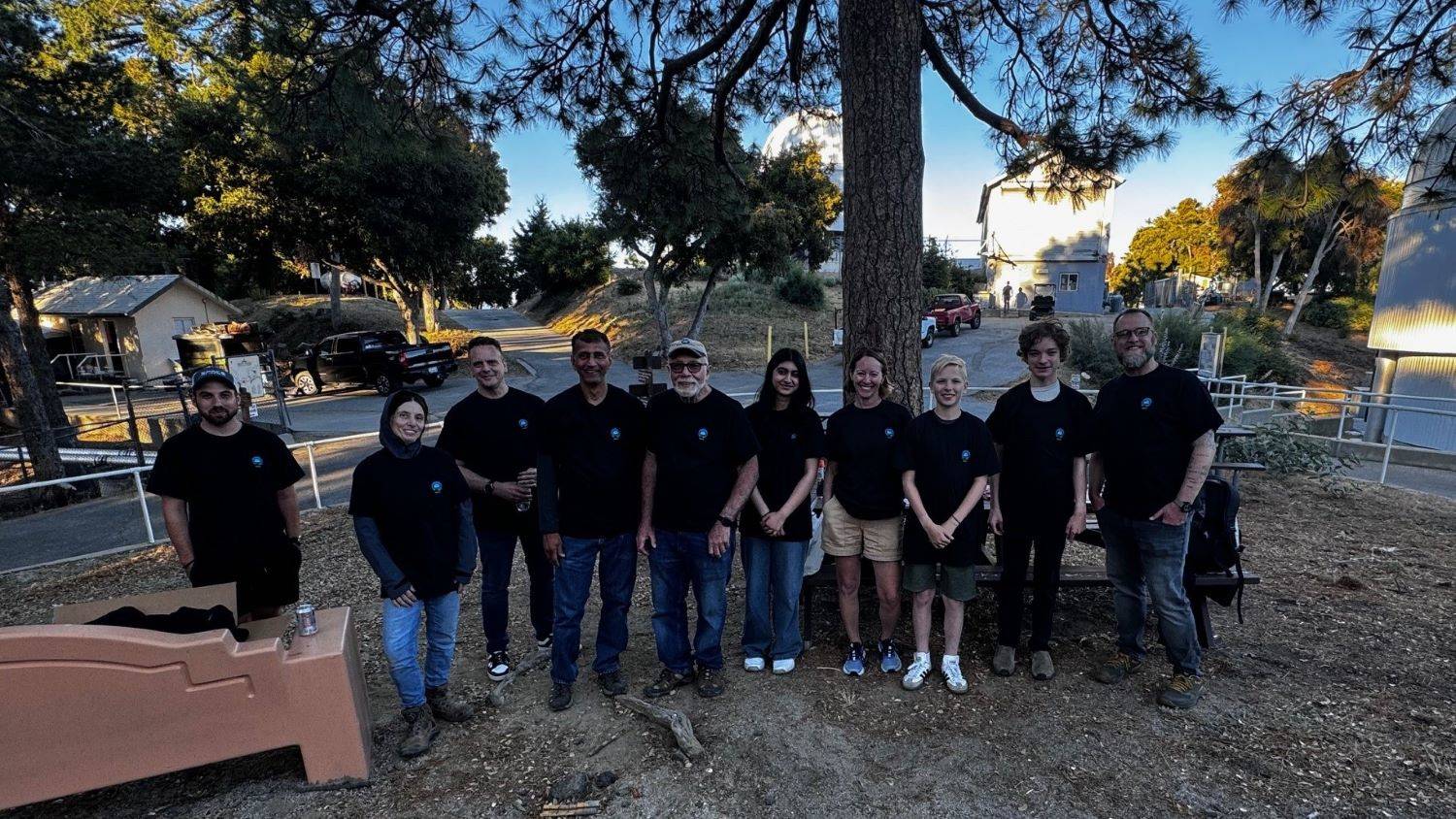Boyce-Astro Experience in Astronomical Research (BEAR)
Hands-On Research at an Historic Observatory
Join the Waitlist
Sign up for the waitlist to receive updates and information how to register for the course.
Join Boyce-Astro for an Experience in Astronomical Research (BEAR) at the historic Mount Wilson Observatory, the home of the world’s largest telescopes from 1908 to 1949. Today it is also the home of CHARA which has measured the size of stars and even an exoplanet. We can also see bears there from time to time! We prefer to say it is a bear of an experience.
Use the observatories where Hubble, Shapley, and even Einstein and other giants of astrophysics made discoveries like these:
• The Milky Way is one of billions of galaxies
• The Universe is expanding
• The first evidence of dark matter
• The location of the center of the Milky Way
You will see all the astronomical facilities at the observatory and the engineering needed for making professional observations. You will have hours of advanced instruction, telescope time, and hours of post observation support of your authoring a scientific paper. Having a published scientific paper makes your application for a scholarship or school unique and puts it at the top of the stack.
“Being able to see the 100-inch dome was enchanting. Being able to use the 60-inch dome was unbelievable as well. I hadn’t considered myself to be an astronomer until that moment, and I knew I belonged.”
How It Works
Get Prepared
Before going to Mount Wilson Observatory (MWO), you will take part in Zoom classes to learn about binary stars and speckle interferometry. You will learn the physics of Kepler’s and Newton’s Laws for orbits, how to make and analyze scientific observations, and how to author a scientific paper. You will learn state of the art software tools for your research project.
For practical experience, your preparation will include participation in speckle interferometry observations of binary stars at one of Boyce-Astro’s remote robotic observatories. Speckle interferometry enables ground-based telescopes to measure stars as if the telescope were in orbit without the atmosphere’s smearing.
Experience Mount Wilson
Here’s an example research experience. If interested, sign up for the waitlist below to get the latest information.
Upon arrival at MWO you will learn the history of the “mountain” and check into the “Monastery” where the famous astronomers stayed a century ago.
You will tour the solar telescope installations and see sunspots as the sun sets over the Pacific. You may get a chance to see the original machine shop and its fascinating array of tools from a century ago – but still in use today.
You will visit the Center for High Angular Resolution Astronomy (CHARA) which is an array of six telescopes on the mountain. The Array can resolve details as small as a nickel seen from 10,000 miles – it sees starspots (sunspots on other stars). The CHARA Array is arguably the most powerful instrument of its kind in the world.
In the 100” dome, you will learn about the instrumentation that the STELAR astronomers will use on our night. Later you will join them to help with their work.
Observe Your Targets
After dinner you will be introduced to the 60” observatory, the world’s largest telescope just over a century ago. It was the prototype for the 100” and Mount Palomar’s 200” telescope. It still operates perfectly, a testament to the Hale’s engineering prowess.
There you will participate in the telescope operations, speckle camera imaging, and, if possible, data reduction of some of your targets’ images. You will experience the team effort needed for doing science today. For part of the night, you will also assist the astronomers at the 100” with their more manual speckle observations.
After the next morning’s breakfast, we will meet to discuss the night’s operations and address questions about reducing the speckle data preparing your scientific paper. Then you are free to visit the MWO museum and / or hike on the trails and see the views from the mountain.
Author Your Scientific Paper
After leaving Mount Wilson, we will aid you in optimizing your orbital ephemeris and authoring your scientific paper from your observations. We will have class and individual Zoom sessions as needed for your paper submission to a journal.
Some graduates are able and want to continue their research with us by participating in the STELAR group of engineers and scientists. We meet weekly to plan new initiatives in Astro science, engineering and education. Some even join before doing BEAR. Our group is very involved with the engineering and software needed for advanced scientific observations in astrometry.
How To Join The Experience
In total BEAR will include over a dozen hours of instruction, over ten hours of shared telescope time at MWO and the Boyce-Astro observatories, food and lodging at Mount Wilson, and support in editing authoring your paper for submission for publication.
The experience is not free, and the cost includes lodging, meals, and use if research grade telescopes. Fees will vary by year. If you are applying for a grant for your work, we can provide an estimate of the cost in advance. Typically, BEAR will follow the Society for Astronomical Sciences (SAS) Annual Symposium in mid-June each year. Plan to use LAX or Burbank airports to arrive.
As with all Boyce-Astro courses and seminars, you need to take our FREE IntroSTARS™ online self-paced course and pass a final quiz as a prerequisite to participate. It requires about 6 hours of lessons and as much time as you wish to use the study guides and chapter quizzes.
If you have not taken a Boyce-Astro course or IntroSTARS™, please go to the IntroSTARS™ page to get started.
